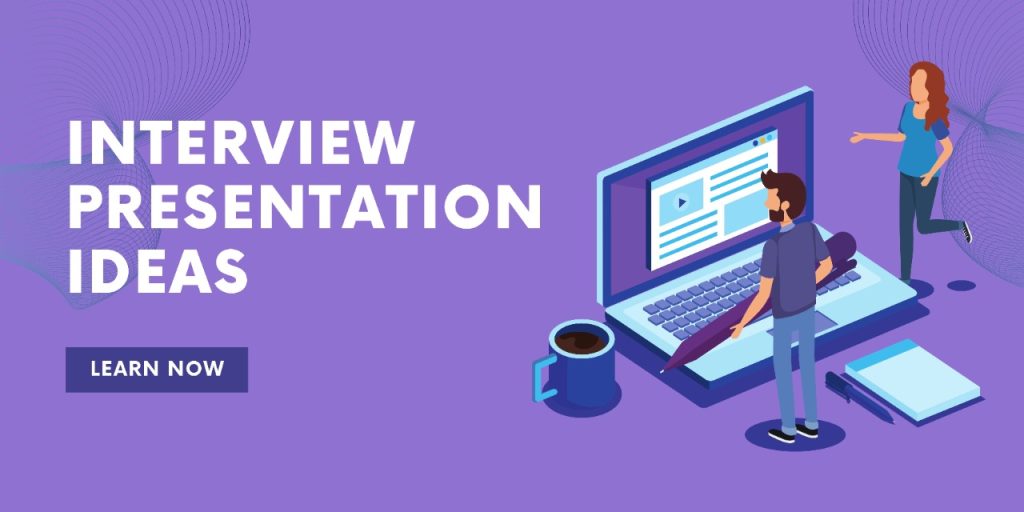What is a Resume?
A resume is a concise, well-structured, 1 to 2-page document that highlights your qualifications, work experience, skills, and educational background. It is a self-marketing tool to introduce yourself to potential employers and showcase your suitability for a particular job or position.
There are two main types of resumes:
- Chronological Resume:
Definition: Presents work history in reverse chronological order, listing your most recent job first.
Key Focus: Highlights your career progression, showcasing steady growth and increasing responsibilities.
Ideal For: Those with a clear and consistent career path.
- Functional Resume:
Definition: Organizes experience by skills and qualifications rather than by chronological order.
Key Focus: Emphasizes skills and abilities, allowing you to de-emphasize gaps in employment or frequent job changes.
Ideal For: Career changers, employment gaps, or individuals with diverse skill sets.
If you don’t lie in any of these categories, you can always use a combination resume; you can add your work experience, showcase your skills, and create the most suitable resume for yourself.
Difference between a Resume And Curriculum Vitae (CV)
People usually confuse Resume and CV. For your understanding, consider resume a quick movie trailer for your career. It is short, about one or two pages, and it shows the best parts—your skills, work experience, and successes. You make a new one for each job you apply to, like changing the trailer to fit the movie.
At the same time, a CV is the whole movie. It is longer and includes everything about your career, all your degrees, the research you have done, and the awards you have won. People use CVs more in jobs like teaching or research, where they want to see your whole story. So, think of a resume as the trailer and a CV as the entire blockbuster movie of your career.
Why is it Important to Make an Effective Resume for Job?
A good resume is not just a document; it is a strategic tool that can make or break your job search. It is important to make an effective resume for a job for the following reasons:
- First Impressions Matter:
Your resume is often the first thing potential employers will see, so making a positive and lasting impression is crucial. A well-structured, error-free resume demonstrates professionalism and attention to detail, highly valued qualities in the workplace.
- Particular to the job:
A general, one-size-fits-all resume won’t cut it. Each job has specific requirements and expectations; your resume should highlight your skills and experience that align with those needs. Tailoring your resume to each position shows your genuine interest and suitability for the role.
- Gatekeeper to Interviews:
Your resume is a gatekeeper, determining whether you will be invited for an interview. A strong resume can capture the attention of hiring managers and convince them to evaluate your qualifications further.
By the end of this article, you will be able to build a professional resume; we will be going through the essential components of a job-winning resume, along with resume examples, do’s and don’ts of an effective resume for a job, as well as a link to free resume templates is provided to you at the end of this article which you may use to build a good resume.
Essential Components of a Job-Winning Resume
A well-crafted resume is your first impression to potential employers and is crucial in marketing yourself. A job-winning resume should include the following key components:
- Contact Information:
The foremost step in building a professional resume is to provide accurate and up-to-date contact details. It must include your full name, email address, phone number, and mailing address. Make sure your email address is professional and reflects your name, e.g. [email protected] rather than [email protected], as it does not show a lack of interest and leaves a negative impression.
- Summary or Objective:
This is your opportunity to briefly introduce yourself and highlight your most relevant skills and experiences. This part is optional if you submit a cover letter along with a resume, as a cover letter already reflects your objective and purpose of applying for the job.
For experienced professionals, a summary is preferred, providing a concise overview of your career trajectory. It acts as your pitch; if the employer does not have time to review the whole resume, he should be able to judge your credibility for that job through this part. For recent graduates or job seekers with limited experience, an objective stating your career goals and how they align with the position you are applying for is more suitable. It should reflect your commitment and dedication to that job.
- Work Experience:
List your previous jobs in reverse chronological order, starting with your most recent position. For each job, include the company name, job title, dates of employment, and a concise description of your responsibilities and accomplishments. Use action verbs to describe your achievements, quantifying them whenever possible.
Some relevant action verbs that can be used in a resume are adapted, evaluated, communicated, led, developed, coordinated, trained, etc. You should avoid static verbs (agree, believe, doubt, guess, imagine, know, mean, recognize, remember, dislike, hate, prefer, want, wish, etc. For example, use statements like increased company sales by 20% rather than working with dedication in the sales department.
- Education:
List your educational qualifications, stating the most recent first; it is always better to go in sequence. If your education is relevant to the job, emphasize it. It should include the name of the institution, degree obtained, date of beginning and ending, and any accomplishments during that period. You can also list the relevant extracurricular activities. Relevant certifications or training programs can also be listed in the education section of the resume. Remember, a resume is differently designed for each type of job; it cannot be generalized.
- Skills:
Highlight your relevant skills, including technical competencies, language proficiency, and soft skills. Categorize them into relevant sections for easy readability. Tailor your skills section to the specific job requirements, highlighting the most in-demand skills. For example, if you are a graphic designer, you can add software like Adobe Photoshop, illustrator or Canva to your skills; you can even attach a link to your portfolio for more to give employers a better idea of your level of expertise.
- Certifications or Projects:
Include any relevant certifications or licenses that enhance your qualifications or any significant projects you have worked on, emphasizing your role and contributions. Fresh graduates with little professional experience can create a job-winning resume by showcasing their projects or certifications, reflecting their relevant skills. This will give a competitive edge to your resume.
- Awards and Honors:
This part is optional, but you can showcase any recognition or awards you have received throughout your career to showcase your credibility. The sequence and emphasis on each of these components varies according to the type of resume you are writing. Below are different types of resume samples for your better understanding.
Additions and Omissions for a Professional Resume
Additions:
- Quantifiable Achievements
Use numbers to demonstrate your impact, such as increased sales by 15% or reduced customer complaints by 20%. This provides concrete evidence of your accomplishments and showcases your ability to deliver results.
- Relevant Keywords
Incorporate keywords from the job description throughout your resume to increase visibility in applicant tracking systems (ATS). It can improve your chances of getting your resume noticed, but make sure you are not overusing the keywords or jargon words.
- Tailored Experience:
Customize your resume for each job application, emphasizing the experiences and skills most relevant to the position. Tailor your summary or objective, work experience descriptions, and skills section to match the job requirements.
- Consistent Formatting
Maintain a clean and consistent format, using a professional font and appropriate spacing. Additionally, keep your tone and sentence structure professional.
- Appropriate Length
Aim for a one-page resume for entry-level positions and a two-page resume for more experienced candidates.
Omissions:
- Personal Information
Avoid including age, marital status, or personal beliefs, as they are irrelevant to your qualifications and may raise concerns about workplace diversity and inclusion.
- Irrelevant Experience
Only include work experience that aligns with the job requirements. Avoid listing irrelevant jobs that might detract from your suitability for the position.
- Negative Information
Avoid mentioning negative experiences, criticizing previous employers, or expressing personal opinions. Maintain a positive and professional tone throughout your resume.
- Incomplete Information
Provide comprehensive details about your work history, education, and skills to give employers a complete picture of your qualifications.
- Grammatical Errors
Not proofreading your resume can result in grammatical errors and ruin your image in front of the employer. So, it is important to avoid any grammatical mistakes.
Choosing a Resume File Name
Selecting an appropriate file name for your resume is essential for building a good resume and demonstrating professionalism. Ideally, your resume file name should include your full name and the words resume or CV. For example, JohnDoe_Resume.pdf or JaneSmith_CV.docx. Avoid using generic names like “Resume Final” to prevent confusion and make it easier for hiring managers to identify your document.
Best Resume Templates
There are various online platforms where you can find paid and free resume templates for building a professional resume. A few of the sites are listed below:
- Novoresume:
Novoresumes offers a wide variety of premium and free resume templates and a resume builder tool that makes it easy to create a professional resume in minutes. Their templates are designed for a variety of industries and experience levels, so you can indeed find one that is perfect for you.
https://novoresume.com/resume-templates
- Resume Genius:
Resume Genius is another great option for finding free and paid resume templates. They also offer a resume builder tool and a variety of other resources to help you with your job search, such as cover letter templates and interview preparation tips.
- Canva:
Canva is a popular graphic design platform that offers various paid and free resume templates. Their templates are known for their sleek and modern designs and are easy to customize to fit your specific needs.
https://www.canva.com/resumes/templates/
- Zety:
Zety is a European resume builder; its templates are designed to be ATS-friendly, which means they are optimized to be read by applicant tracking systems (ATS) that many companies use to screen resumes.
https://zety.com/resume-builder
- MyPerfectResume:
MyPerfectResume is also an excellent option for building an effective resume for a job using various available templates. Their templates are designed to be modern and stylish, and they are a good option for creative professionals.
https://www.myperfectresume.com/resume/builder
Conclusion
In crafting an effective resume for a job, the key lies in presenting a compelling narrative of your professional journey. Begin with a concise summary summarizing your career goals and highlighting your core strengths. Tailoring your resume for each job application is essential—align your skills and experiences with the specific requirements of the position. Use a clean and organized format, allowing for easy readability, and choose a professional font to enhance visual appeal. Remember, numbers speak louder than words; quantify your achievements to showcase tangible impacts. Include relevant keywords from the job description to pass through applicant tracking systems. Moreover, emphasize what you did in your previous roles and how your contributions made a difference.
Use action verbs and be specific about your accomplishments. Strive for a balance between showcasing your skills and providing a chronological work history. Lastly, proofread meticulously to ensure error-free content.
A professional resume is not just a list of jobs; it is a strategic marketing document showcasing your unique value to potential employers. Keep it targeted, concise, and visually appealing to leave a lasting impression and increase your chances of landing that dream job.



